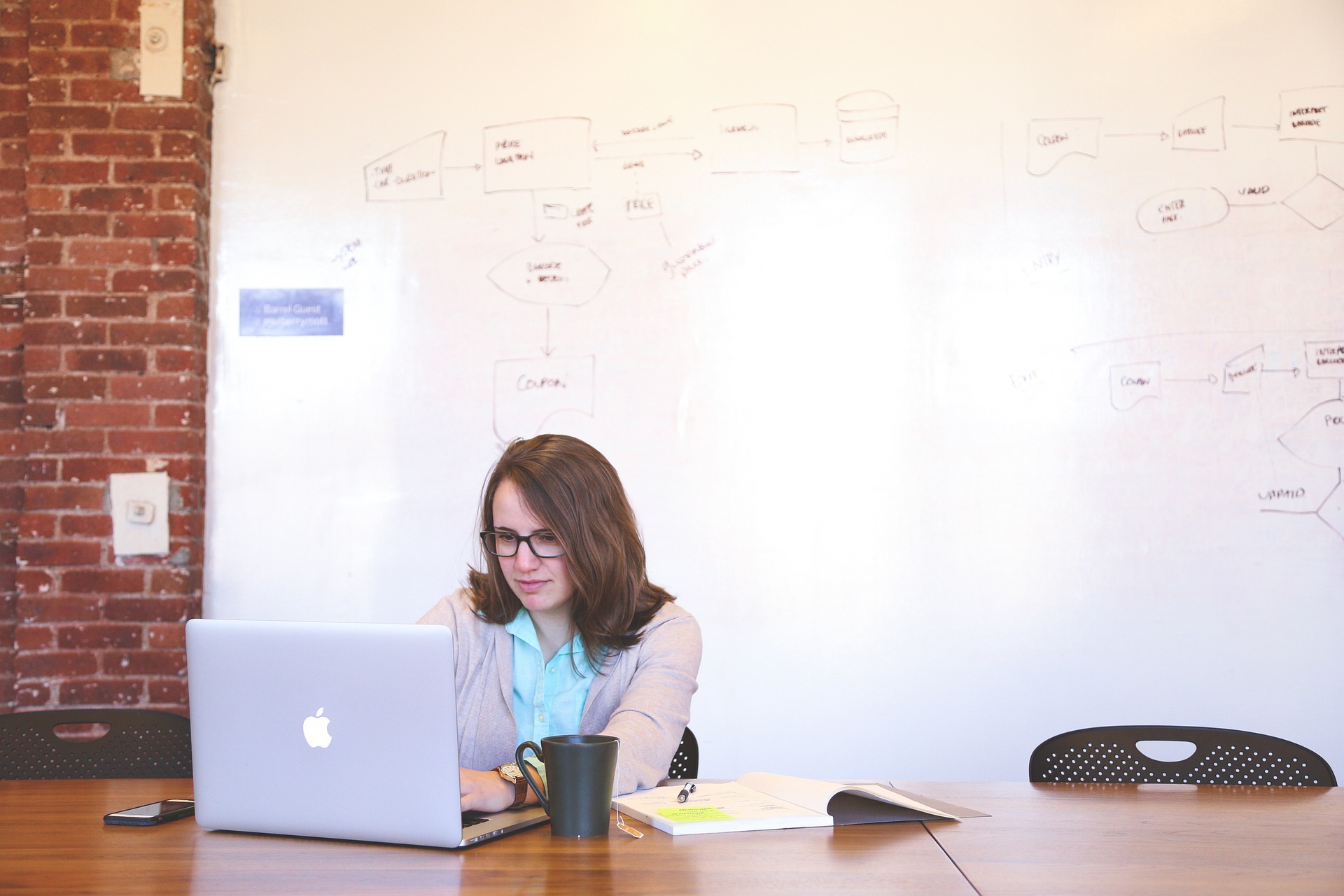Implementing your content marketing program is no easy feat – starting, optimizing and scaling it all come with their own set of barriers, and odds are you won’t craft a flawless program. However, you can prepare yourself to craft a successful one.
Taken from our full e-guide, “100 Mistakes Businesses Make When Starting, Optimizing and Scaling Content Marketing Programs,” take a look at these 10 common mistakes to help you shape yours to be as effective and profitable as possible.
When starting your content marketing program
This can sometimes be the hardest step to initiate. Finding your team, organizing your resources, making a detailed plan – it requires time, money and dedication. However, if you commit to this process, you’ll yield many more benefits than your original sacrifices. When starting your program, be sure to avoid these three mistakes:
1. No clearly defined, measurable goals
Most companies appreciate that content is a great way to drive results with a good ROI. In their rush to get the program up and running, however, they fail to define clear and measurable goals. Without goals, the program will lack focus, which can lead to slow progress and cost overruns.
To ensure that your content marketing program has direction, establish at least one measurable goal before you start your program. For example, try to increase your leads by 50%.

2. Non-existent or deactivated social media accounts
When companies focus their content marketing program solely on pieces for their website, they miss out on the reach and credibility that social media can offer. If you have not yet opened and activated social media accounts relevant to your target audience (whether on Facebook, Instagram, LinkedIn or other platforms), then you’re placing an inordinate emphasis on organic search traffic. Especially if you’re a newer company, that traffic may not be coming your way for a while.
To sidestep this issue, open and activate social media accounts on platforms that your target demographic uses. Perform de facto A/B testing by publishing small pieces of content to your social media accounts and see how your audience reacts on each platform.
3. Giving your content marketing program less than a year to begin generating bottom-funnel results
It may take six months or longer for your program to yield significant top-funnel results. It may take at least 12 months for the program to generate customer conversions. The bottom line is it simply takes time for quality content – produced consistently – to attract and acquire new customers. A lack of patience can cause your company to quickly lose any progress made from the beginning.
If your company has C-suite executives, it’s imperative that you have at least one advocate to encourage patience if others become frustrated with results, or the lack thereof. As an alternative, be prepared to present your case for patience so that all of management’s fears are allayed.
When optimizing your content marketing program
Once you’ve begun your content marketing program, congratulations – the first step is complete! If you want to give your program the best chance at success, however, you can’t stop there. On the contrary, you need to optimize your content by tracking its progress and making improvements where necessary. Be sure to avoid these four mistakes so that your optimization initiatives don’t go amiss:

4. No regular performance reports
If you can’t measure it, then you can’t improve it. Many companies successfully start a content marketing program but then neglect to implement a policy of regular performance audits. Without periodic performance reports, you may be bleeding time and money without even realizing it.
Be sure to have a set schedule for compiling and analyzing performance reports. For example, regularly compare the performance of 300-1,000-word posts around the same topic to determine whether article length is a key factor in number of unique visitors or bounce rate.
5. No focused, attention-grabbing lede
Sometimes businesses focus all their content efforts on highlighting their services or summarizing an industry topic, and they forget to include their target audience in the mix. When your content strategy is solely based on sales or industry expertise, your target audience loses interest in your brand. They can’t find any personal value in that type of content.
Instead, your content should be focused on the needs and goals of your target audience. Create a lede that immediately shows your audience that you are addressing their needs. It will grab their attention and entice them to read the full article. Then towards the end, if needed, you can tie in a CTA to connect your services with their needs.
6. Inaccurate, nondescript meta descriptions
Meta descriptions, per Google, act as a “pitch” to your users to convince them that your page is what they are looking for. Unfortunately, many meta descriptions are bland, unreadable or, worst of all, misleading. A meta description that doesn’t match the actual content of the page will frustrate searchers and send them scrambling away from your site. Because bounce rate can be a key factor in Google’s ranking algorithm, misleading meta descriptions can also undermine the very foundations of your SEO strategy.
To create optimized meta descriptions, be sure that each one not only contains your focus keyword(s) but also provides a succinct and accurate description for its associated page.

7. Not making your website and your content mobile friendly
In 2019, mobile searches accounted for up to 60% of all organic search traffic in the United States. If your website is not responsive to mobile devices, or your content formats poorly on smaller screens, then you’re no doubt losing a large proportion of potential users.
For this reason, it’s important to ensure that both your website and your content are optimized for the mobile audience. Check all aspects of your site: menus, links, images, text sizes, screen formatting and more.
When scaling your content marketing program
Scaling a content marketing program is a third step that often goes unaddressed. After all, if your content is optimized to yield the best results, what else is there to do other than reap the benefits as they come?
Contrary to popular belief, you don’t have to wait for the content to do the work for you. You can boost your success rates and reach a broader audience by implementing a few extra measures. When scaling your program, avoid these three mistakes to increase your brand visibility and promote efficient internal processes:
8. No unified workflow dashboard for in-house and external content resources
Your editorial calendar may hold dozens of content pieces at one time. You may also have a handful of team members both in house and outsourced. If you don’t use a common workflow dashboard for both groups, you run the risk of miscommunication, which could very likely result in duplicate content, missed deadlines and inconsistent goals.
Make sure that everyone understands your program’s goals and content plan, and encourage open communication between all team members by implementing a workflow dashboard.

9. No internal links in your email signature
Audiences today value convenience. They want quick, simple solutions to their problems. If one of your prospects likes an email you send, but you don’t provide a link for them to learn more information (i.e., a link to another blog post or pillar page), they won’t go out of their way to find your website on their own.
Every single email needs a link to your site. This link makes it easy for your prospects to follow through with your call to action (which you should definitely include in the email). The easier you make it for them, the more likely it is that they’ll continue down the sales funnel. Maximize the potential reach your emails could have by adding an internal website link to your signatures.
10. Not regularly promoting older content that is still relevant and high-performing
If you have an evergreen piece of content out there that is still yielding a high share of organic traffic, then think about how to keep promoting it. If you fail to do so, you may be missing out on an opportunity to climb in Google’s SERP rankings. After all, by traffic share standards, one result that shows up on page one is better than five results that show up on page five.
Regularly audit your older content to see which pieces are both high performing and still relevant to today’s audience and industry issues. Then develop a strategy to further promote them – it’s a smart, reliable way to give your readers the content they want.
To learn more
Establishing a content marketing strategy for your business is easier said than done. While it won’t be perfect, it still can be successful if you invest the proper amount of time and resources into managing it.
If you have a content marketing program, or are planning one, download our ebook: 100 mistakes businesses make when starting, optimizing and scaling content marketing programs. Learn from the mistakes of hundreds of other companies. 100 mistakes walks you through common and uncommon challenges that they faced with their content marketing programs.











